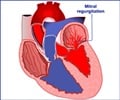Incidence and the Ethnicity Factor
Metabolic syndromes affects a large number of people; but it is more in those who are inactive and with excess fat in their waste.
Metabolic syndromes affects a large number of people; the prevalence increases with age. In the US it is believed that it affects 12% of children, 20% of adults, and 50% of older adults.
The conditions that make up the metabolic syndrome can affect anyone at any age, but it is most frequently seen in those who are significantly overweight (with most of their excess fat localized in the abdominal area) and inactive.
There is a problem with choosing waistline fat as an essential feature of Metabolic Syndrome. What is a “large waistline”? The answer varies with the ethnicity of the patient. This variation also applies to the linking of waistline fat with insulin resistance, diabetes, and heart disease.
Studies suggest that for people of Asian origin, as a group, the cut-off levels for the symptoms of Metabolic Syndrome are different from non-Asians. This is one of the reasons why a single definition of the syndrome has not yet been established and why medical organizations use the “any three of the five” measures for diagnosis. Research on ethnic differences in the symptoms and their inter-relationships is ongoing.
















